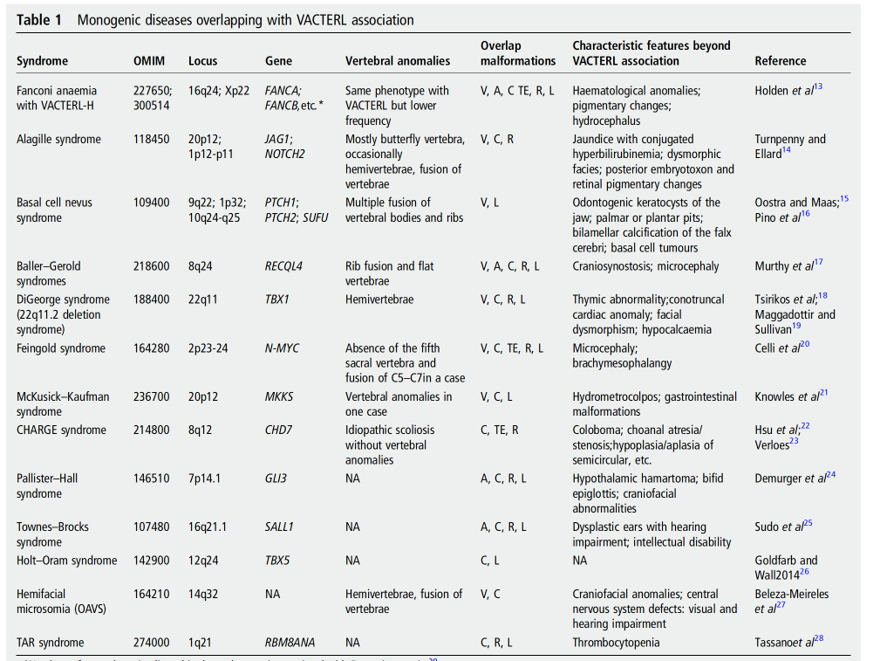我们总结了VACTERL相关椎体畸形的基因全景和临床应用
- 新闻
VACTERL association is a condition comprising multisystem congenital malformations, causing severe physical disability in affected individuals. It is typically defined by the concurrence of at least three of the following component features: vertebral anomalies (V), anal atresia (A), cardiac malformations (C), tracheo-oesophageal fistula (TE), renal dysplasia (R) and limb abnormalities (L). Vertebral anomaly is one of the most important and common defects that has been reported in approximately 60–95% of all VACTERL patients. Recent breakthroughs have suggested that genetic factors play an important role in VACTERL association, especially in those with vertebral phenotypes. In this review, we summarised the genetic studies of the VACTERL association, especially focusing on the genetic aetiology of patients with vertebral anomalies. Furthermore, genetic reports of other syndromes with vertebral phenotypes overlapping with VACTERL association are also included. We aim to provide a further understanding of the genetic aetiology and a better evidence for genetic diagnosis of the association and vertebral anomalies.

